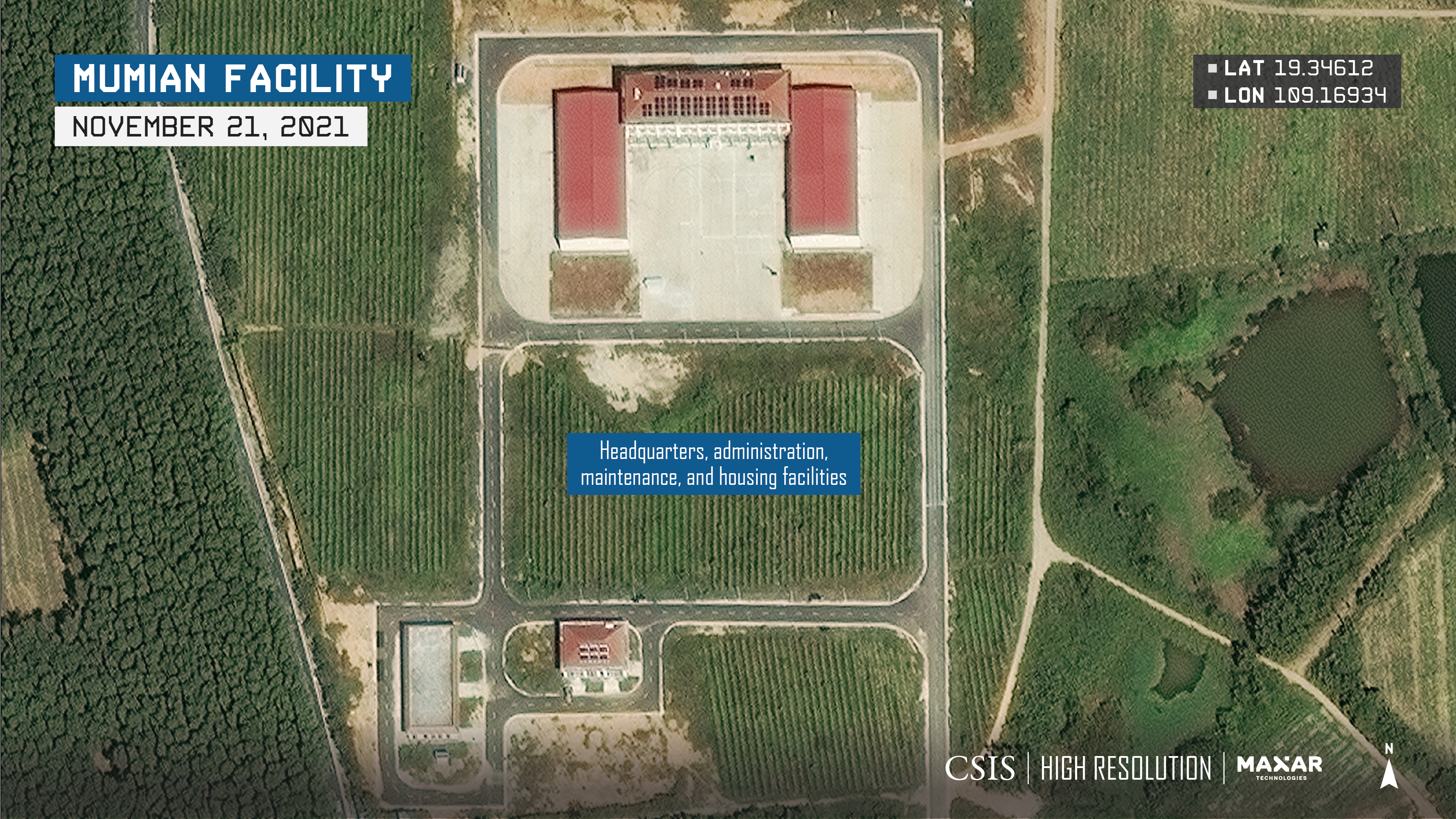China Is Ramping Up Its Electronic Warfare and Communications Capabilities near the South China Sea

Photo: iLab/CSIS
The Chinese military is taking major steps toward improving its electronic warfare (EW), communications, and intelligence-gathering capabilities near the South China Sea. Recent satellite imagery reveals that China has rapidly expanded facilities near Mumian, on Hainan Island, providing the People’s Liberation Army (PLA) with greater ability to track and counter foreign military forces operating in the region and in outer space. While significant in their own right, the upgrades at Mumian are part of a broader effort by the PLA to shore up its defensive and offensive electronic capabilities.
Click to expand.
The Mumian facility is home to satellite tracking and communication (SATCOM) platforms and appears to possess systems that could be used in EW. The site also likely plays a role in collecting signals intelligence (SIGINT), which includes any intelligence gleaned from intercepting and analyzing foreign signals or communication from satellites, radars, weapons platforms, and other electronic systems. Many assets in the vicinity appear dedicated to gathering communications intelligence (COMINT), a subset of SIGINT that includes the collection of communications between individuals and organizations.
While satellite imagery indicates that this installation at Mumian has been involved in similar activities since at least 2018, imagery from November 21, 2021, reveals the recent construction of several key new assets. A new SATCOM/COMINT complex on the southern side of the area consists of a large building, an array of four dish antennas (three 14 meters wide and one 4 meters wide) for SATCOM and tracking, and at least four tall tower antennas suitable for communications or EW. An older northern facility in the area has an array of three tower antennas, likely for use in EW.
Click to expand.
Several large new buildings have also been constructed. One likely serves as the overall headquarters for the entire site, while another serves as headquarters and administration for the new SATCOM/COMINT complex. A third building, likely for maintenance and housing personnel, is positioned nearby. Distributed throughout the enlarged facility are at least 90 vehicles and trailers of various types, including a sizeable number featuring mounted antennas (configured as either a single large antenna or two smaller antennas).
Most of the recent expansion was completed in a little over a year. Visible in imagery from August 30, 2020, were newly constructed roads and recently laid building foundations. By November 21 of this year, most of the construction appears to have been completed. The presence of vehicles in recent imagery suggests that regular operations are already underway throughout much of the newly constructed areas. The large number of vehicles at Mumian and their deployment and operations indicate that the site is likely used as training grounds for PLA forces engaged in SIGINT collection and EW.
The Mumian facility is part of a growing network of military installations enabling the PLA’s Southern Theater Command to project power into the South China Sea. About 135 kilometers to the southeast, on the southern coast of Hainan, lies Yulin Naval Base. Yulin serves as homeport to China’s force of nuclear-powered ballistic missile submarines, as well as major Chinese surface vessels, including the aircraft carrier Shandong. The PLA Navy’s Type 075 amphibious assault ships have been spotted there as well.
China also fields significant communications and SIGINT systems within hotly contested areas of the South China Sea. China has installed radar and communications facilities, as well as large antenna arrays for SIGINT, on multiple sites in the South China Sea—including on Subi Reef and Fiery Cross Reef. Furthermore, China has put in place a network of floating and fixed sensors and communications equipment in the waters between Hainan Island and the Paracel Islands. This equipment is cast as being part of an environmental monitoring and communication system but could have potential applications for the Chinese military.
The expansion of the facility at Mumian and the fielding of new electronic systems in the South China Sea fit within broader efforts to modernize the PLA. Under President Xi Jinping, China has placed a high priority on not only upgrading its own EW capabilities but also ensuring that the PLA can operate in electronic and cyber environments contested by major military powers like the United States. In 2015, China initiated major organizational reforms that included the creation of the PLA Strategic Support Force, which centralizes China’s space, cyber, electronic, and psychological warfare capabilities. China is expected to continue its heavy investments in these areas as it pushes to transform the PLA into a force able to operate in the complex networked environments of the future.
Matthew P. Funaiole is the interim director of the iDeas Lab and senior fellow with the China Power Project at the Center for Strategic and International Studies (CSIS) in Washington, D.C. Joseph S. Bermudez Jr. is a senior fellow for imagery analysis (non-resident) with the CSIS iDeas Lab and Korea Chair. Brian Hart is an associate fellow with the CSIS China Power Project.
Commentary is produced by the Center for Strategic and International Studies (CSIS), a private, tax-exempt institution focusing on international public policy issues. Its research is nonpartisan and nonproprietary. CSIS does not take specific policy positions. Accordingly, all views, positions, and conclusions expressed in this publication should be understood to be solely those of the author(s).
© 2021 by the Center for Strategic and International Studies. All rights reserved.










